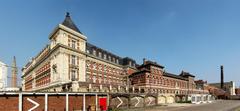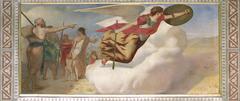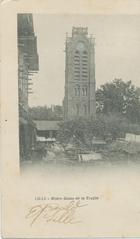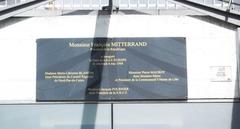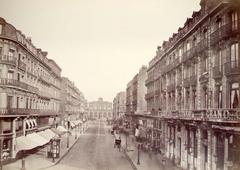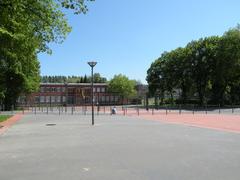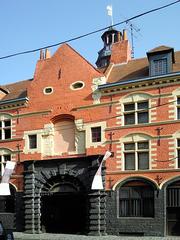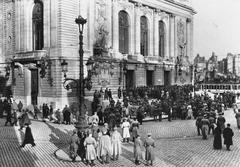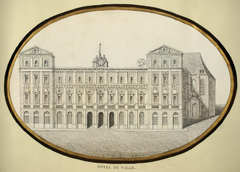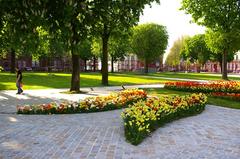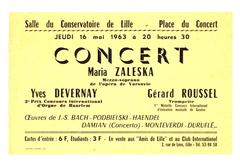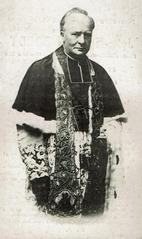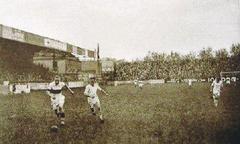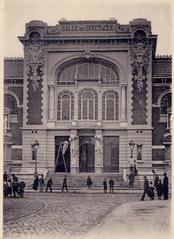Hospice Comtesse Lille: Visiting Hours, Tickets, and Historical Site Guide
Date: 04/07/2025
Introduction
Situated in the heart of Vieux Lille, the Musée de l’Hospice Comtesse is a cornerstone of the city’s historical and cultural landscape. Founded in 1237 by Joan of Constantinople, Countess of Flanders, this remarkable institution began as a charitable hospital and convent, serving the sick and poor of Lille for centuries. Over time, it has evolved into a museum that not only preserves the memory of its humanitarian origins but also showcases Lille’s rich heritage through its architecture, collections, and community programming.
Visitors to the Hospice Comtesse will find an immersive experience: original medieval rooms, a beautifully restored chapel, a traditional Flemish kitchen, an apothecary, and a wealth of artifacts from various eras. The museum’s exhibitions and hands-on activities connect past and present, offering insight into the evolution of healthcare, art, and daily life in Lille.
This guide provides everything you need to plan your visit, including up-to-date information on visiting hours, ticket prices, accessibility, special exhibitions, and tips for making the most of your time at one of Lille’s most treasured historical sites. For the latest events and programming, visit the official museum website or the Lille tourism portal.
Table of Contents
- Introduction
- Historical Overview
- Architecture and Collections
- Visiting Information
- Exhibitions and Events
- Guided Tours and Educational Programs
- Tips for Visitors
- Nearby Attractions
- Frequently Asked Questions (FAQ)
- References and Useful Links
Historical Overview
Foundation and Early History (13th Century)
The Hospice Comtesse was established in 1237 by Joan of Constantinople, Countess of Flanders, as a response to the medieval Christian values of charity and civic responsibility (Nomads Travel Guide). Its original purpose was to care for the poor and sick of Lille, functioning as both a hospital and a convent administered by nuns.
Medieval and Renaissance Expansion
As Lille prospered, the hospice expanded significantly, especially in the 15th and 16th centuries (Tourist Platform). Key medieval architectural features, such as brick and stone construction, timber-framed rooms, and vaulted ceilings, remain visible today. The 15th-century spa and further renovations in the Baroque era enhanced its medical facilities and comfort.
Baroque Enhancements and Later Use
The 17th and 18th centuries saw the addition of grander spaces, including a classical French pavilion and a chapel adorned with heraldic coats of arms. The hospice continued to serve the community until its closure in 1939, as modern healthcare systems rendered its original function obsolete (Tourist Platform).
Transformation into a Museum
Following restoration, the site reopened in 1962 as the Musée de l’Hospice Comtesse (Tourist Platform). Today, it stands as a symbol of Lille’s enduring spirit of compassion and community.
Architecture and Collections
Gothic, Flemish, and Classical Features
The Hospice Comtesse is an architectural palimpsest, presenting a blend of Gothic, Flemish, and Classical French styles. Notable elements include:
- Gothic Features: Pointed arches, ribbed vaults, gargoyles, and stained glass, especially in the chapel.
- Flemish Influences: Brickwork, timber galleries, and tiled kitchens reflecting regional traditions.
- Classical Pavilion: An 18th-century addition that closes the courtyard with symmetry and grandeur.
Classified as a Monument Historique, the hospice is a testament to Lille’s evolving architectural landscape (Nomads Travel Guide).
Notable Rooms and Artifacts
- Chapel: Features 66 painted coats of arms of benefactors, an ornate altar, and original stained glass.
- Flemish Kitchen and Apothecary: Restored with period furnishings and utensils, evoking daily life of caregivers and residents.
- Historic Wards: Display antique beds, religious icons, and medical instruments from the 17th–18th centuries.
- Collections: Nearly 70,000 works including paintings, sculptures, manuscripts, ceramics, textiles, and rare globes by Vincenzo Coronelli.
Visiting Information
Opening Hours
- Monday: 14:00–18:00
- Wednesday to Sunday: 10:00–18:00
- Closed: Tuesday, Monday mornings, and certain public holidays
Always check for updates or special event schedules on the official museum website.
Ticket Prices
- Adults: €7
- Reduced Rate (students, seniors, groups): €5
- Children under 12: Free
- Free Entry: Available on the first Sunday of each month; additional discounts may apply (museum’s website)
Accessibility
- Wheelchair accessible with ramps and elevators
- Adapted restrooms
- Sensory tours and family-friendly facilities
- Specific accommodations can be arranged by contacting the museum (Audiala)
Location and Getting There
- Address: 32 rue de la Monnaie, 59800 Lille, France
- Public Transport: 15-minute walk from Lille-Flandres and Lille-Europe train stations; Rihour metro station (Line 1); local shuttle and V’Lille bike-sharing available (Zoom Sur Lille)
Facilities and Services
- Restrooms and cloakroom
- Gift shop with books and local souvenirs
- No café inside, but surrounded by many eateries in Vieux-Lille (The Good Life France)
- Bicycle racks in the courtyard
Exhibitions and Events
Permanent Collections
- Medieval and Renaissance architecture and furnishings
- Paintings and portraits of Lille’s noble families and religious leaders
- Religious artifacts, manuscripts, and everyday objects illustrating local life (mhc.lille.fr; 59.agendaculturel.fr)
Current and Upcoming Exhibitions
- “The Distorted Party” (26 April – 9 November 2025): A contemporary art exhibition exploring themes of celebration and societal challenges, part of the Lille3000 Fiesta festival (fiestalille3000.com; Zoom Sur Lille)
- Regularly changing exhibitions on local history, Flemish culture, and hospital heritage
Special Events
- Guided and thematic tours (in French, English, and Dutch)
- Family workshops and creative activities
- Community events and collaborations, such as the European Night of Museums
Guided Tours and Educational Programs
- Standard Tours: Explore the site’s history and art collections with an expert guide
- Sensory and Thematic Tours: Designed for visitors with disabilities or specific interests
- Workshops: Art, history, and hands-on activities for children and families (Audiala)
Tips for Visitors
- Plan ahead: Check online for current exhibitions, events, and any schedule changes
- Best times to visit: Mornings or weekdays for a quieter experience (TripHobo)
- Photography: Non-flash photography is permitted in most areas; confirm restrictions on-site
- Language: Most information is in French, but audio guides and select materials are available in English and other languages
- Weather: Some courtyards are partially open—dress for the weather
Nearby Attractions
- Grand Place: Lille’s iconic central square
- Lille Cathedral (Cathédrale Notre-Dame-de-la-Treille): A striking blend of Gothic and modern architecture
- Old Stock Exchange (Vieille Bourse): Renowned for its Renaissance architecture and book market
- Palais des Beaux-Arts de Lille: One of France’s largest fine arts museums
Combine your visit to the Hospice Comtesse with a stroll through the cobbled streets and vibrant boutiques of Vieux-Lille.
Frequently Asked Questions (FAQ)
Q: What are the Musée de l’Hospice Comtesse visiting hours?
A: Monday 14:00–18:00, Wednesday to Sunday 10:00–18:00. Closed Tuesday, Monday mornings, and certain holidays.
Q: How much do tickets cost?
A: Adults €7, reduced rate €5 (students, seniors, groups), children under 12 free. Free entry on the first Sunday of each month.
Q: Is the museum wheelchair accessible?
A: Yes, with ramps, elevators, and adapted restrooms.
Q: Are guided tours available?
A: Yes, in several languages; book in advance for group or special-interest tours.
Q: Can I take photos?
A: Non-flash photography is usually allowed; check signage for restrictions during special exhibitions.
Q: What is the best way to reach the museum?
A: On foot from city center or by public transport (nearest metro: Rihour).
References and Useful Links
- Nomads Travel Guide
- Tourist Platform
- Lille Tourism
- Official Museum Website
- Fiesta Lille3000
- Zoom Sur Lille
- The Good Life France
- Audiala
- TripHobo
- 59.agendaculturel.fr
- Visit Places France
Summary
The Musée de l’Hospice Comtesse offers a captivating journey through Lille’s medieval and modern heritage. Its blend of Gothic, Flemish, and Classical architecture, extensive collections, and dynamic exhibitions make it essential for anyone seeking to understand the city’s past and present. With accessible facilities, engaging programs, and a prime location, the Hospice Comtesse stands as a living monument to Lille’s enduring culture of care and creativity. For an enriched experience, check the latest information online, use the Audiala app for audio guides, and consider combining your visit with other nearby historical sites.
